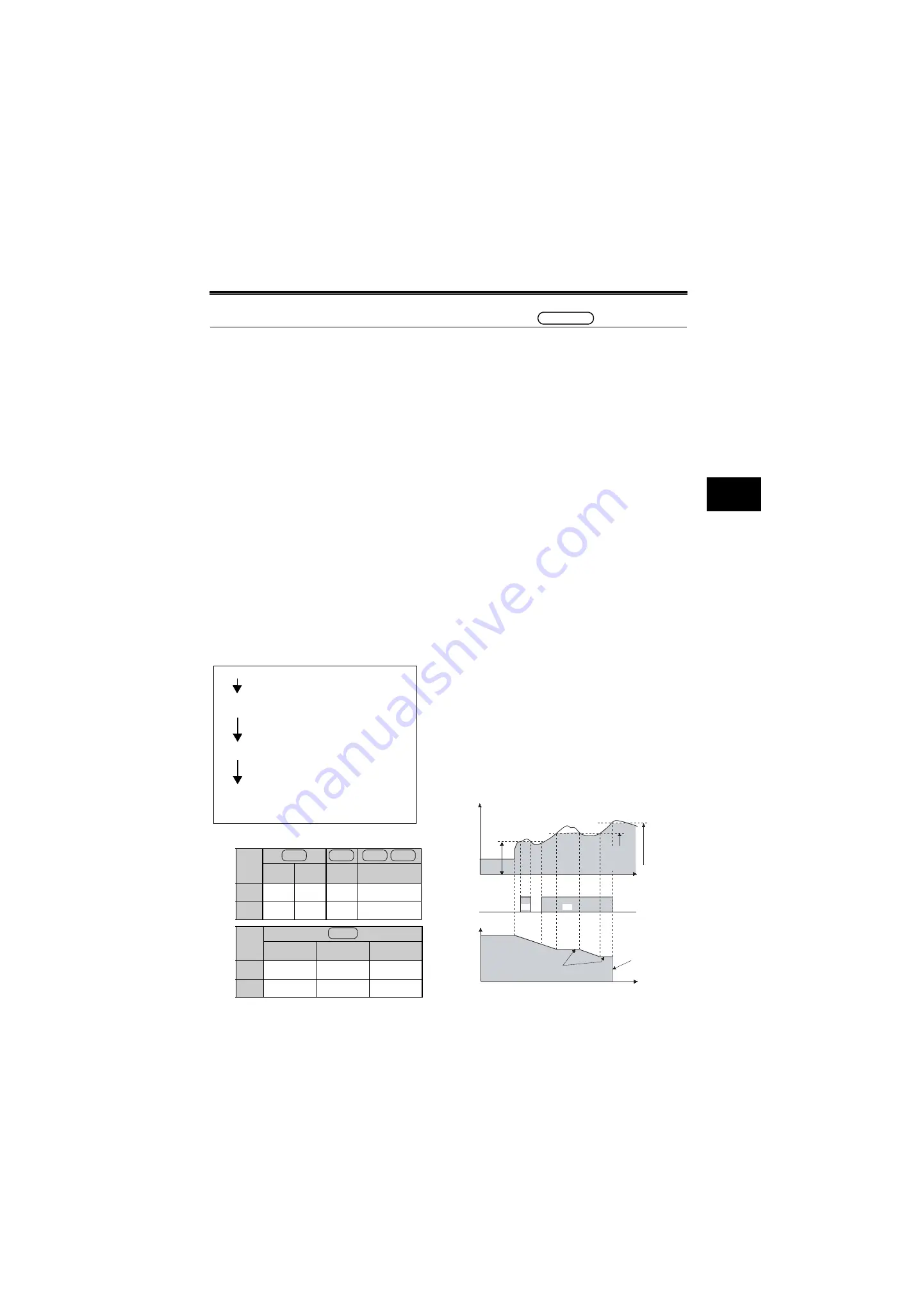
107
1
S
PECIFI
C
A
T
IONS
SPECIFICATIONS
1.5.5
Regenerative overvoltage protection (OV1 to OV3)
(common)
When the motor is decelerated by the inverter, the output
frequency falls according to the deceleration time set
value. When the load is light or inertia J (moment of inertia)
is large, the motor speed may exceed the synchronous
speed and enter the power regeneration range. At this
time, the regeneration energy of the load is converted
(regenerated) into electric energy and consumed by the
motor itself and in the inverter. The regeneration
overvoltage function is provided to prevent the built-in
capacitor terminal voltage from rising abnormally due to
large regenerative energy when motor slip has increased.
Braking torque of approximately 20% of the rated motor
torque is generated by the regenerative energy consumed
in the motor and inverter. When the brake unit is used,
braking torque of 100 to 150% of the rated torque is
generated by the electrical energy consumed by the
discharging resistor.
The regenerative energy of the transistorized inverter is not
returned to the commercial power supply. Install the power
supply regenerating converter (FR-CV) and high power
factor converter (FR-HC, MT-HC) options to return the
regenerative energy to the power supply.
If the regenerative energy from the motor has become
excessive and the regenerative brake torque (current) has
exceeded the specified value during motor deceleration,
the stall prevention (overvoltage) function stops the fall of
the output frequency to prevent regenerative overvoltage
shut-off from being activated. If the deceleration time is
extremely short or the load inertia J (moment of inertia) is
very large, the stall prevention (overvoltage) function may
not be enough to prevent regenerative overvoltage shut-
off.
The stall prevention function is not available for
regenerative overvoltage during constant-speed operation.
When working with a negative load (in descending
operation) which always is in the regenerative status, fit the
power supply regenerating converter option to avoid
regenerative overvoltage shut-off to activate. Also, to use
power supply regenerating converter, install a brake
register and inverter with sufficient heat capacities.
common
Deceleration start
1) Regenerative brake operation
(approximately 360VDC)
*1
2) Regenerative brake duty excessive
3) Regenerative overvoltage shut-off
(200Vclass : approximately 400VDC)
*2
400Vclass : approximately 800VDC
*1
Voltage where the function activates differ according to
the model. Refer to the below table.
*2
Voltage where inverter trips differ according to the model.
22K or
less
75K or
more
75K or
more
0.4K or more
200V
class
DC380V DC376V DC376V
DC390V
400V
class
DC760V DC785V DC785V
DC760V
BU mode
FR-BU2
mode
MT-BU5
mode
200V
class
DC360V
DC370V
DC376V
400V
class
DC740V
DC740V
DC784V
A700
F700
E700
D700
(4$7
1) Regenerative brake operation
Switches ON the brake transistor to start current
in the brake discharge resistor.
2) Regenerative brake duty excessive
Stops use of the regenerative brake temporarily
if the regenerative brake duty value exceeds the
specified value. Resumes use of the
regenerative brake when the brake discharge
resistor has cooled down.
3) Regenerative overvoltage shut-off
Instantly activates the protective circuit to shut
off the transistor gate.
OFF
OFF
ON
ON
Regenerative
brake voltage
D
C
v
o
lt
ag
e
Regenerative
brake operation
Stall preven-
tion voltage
(over voltage)
Regenerative
overvoltage
protection
voltage
Time
Time
Regenerative
overvoltage
shut-off
Regenerative overvoltage stall activated
O
u
tp
ut
f
req
ue
nc
y
Operation of regenerative overvoltage stall prevention
Summary of Contents for FR-A700 Series
Page 245: ...279 2 PARAMETER PARAMETER MEMO ...
Page 440: ...474 PARAMETER MEMO ...
Page 522: ...556 SELECTION MEMO ...
















































